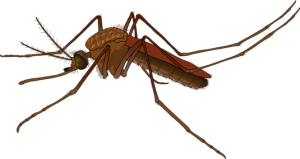Children with microcephaly congenital Zika virusa viral infection that can be transmitted to the unborn child during the gestational period, may present a cerebral visual dysfunction regardless of the presence of other visual anomalies. This is the finding of research recently published in the journal of theAmerican Association for Paediatric Opthalmology and Strabismus (AAPOS) e presented at the last meeting of theAmerican Society of Cataract and Refractive Surgery (ASCRS) held in the first week of May in Los Angeles, USA.
Human infection with the Zika virus (ZIKV) is carried by the bite of certain  mosquitoes belonging to the genus Aedeswhich are also responsible for the transmission of other diseases, such as yellow fever, and, as declared by the World Health Organisation (WHO), and has affected 73 countries starting from the north-east of Brazil, considered the epicentre of the viral infection.
mosquitoes belonging to the genus Aedeswhich are also responsible for the transmission of other diseases, such as yellow fever, and, as declared by the World Health Organisation (WHO), and has affected 73 countries starting from the north-east of Brazil, considered the epicentre of the viral infection.
Complications for the unborn child can be very serious and include abnormalities affecting the central nervous system, the auditory system and not least the visual system. In fact, the ASCRS data showed that approximately 28% of children with ZIKV are affected by retinal changes, serious optic nerve abnormalities in approximately 20% of cases and chorioretinal scars affecting the macular area in 17% of cases. In addition, more than 70% of children present a visual acuity below normal and the 75% is affected by strabismus.
The close association between congenital Zika virus syndrome and severe visual impairment should, therefore, lead to the adoption by professionals of theEyecare, of early intervention measures for visual rehabilitation in children suffering from this pathology.
Bibliography
-Ventura LO et al. Visual impairment in children with congenital Zika syndrome J AAPOS.pii: S1091-8531(17)30311-7.https://www.ncbi.nlm.nih.gov/pubmed/28450178
Dr. Carmelo Chines
Direttore responsabile
